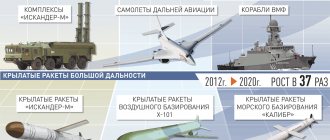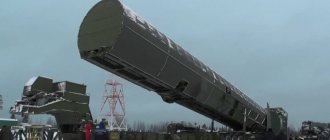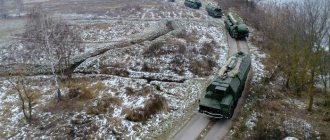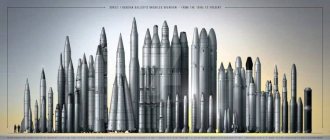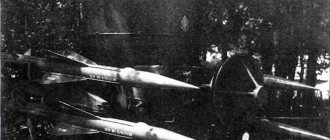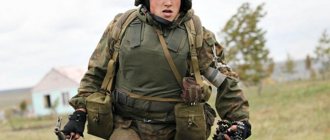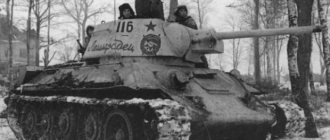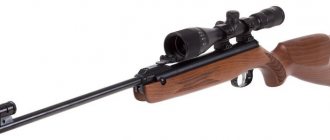The combat use of the Russian "three hundred" will be effective only in combination with other air defense systems
The Soviet-Russian anti-aircraft missile system (ZRS) S-300P has a very unique image. On the one hand, not only in Russia, but almost throughout the world it is considered as a kind of “absolute weapon” of ground-based air defense. On the other hand, the “three hundred” never really fought with anyone. And at the same time, he regularly receives blows to this image of himself, and the blows are completely undeserved. The originality of the “three hundredth” (and related “four hundredth”) problems was discussed in the articles “Why the S-400 didn’t fire” (“NVO”, 06/01/18) and “Troops of Peaceful Sky” (“NVO”, 11/23/18). But we have to contact them again.
FEATURES OF THE WORK
The S-300P in its early modifications PT and PS was created as an integral part of the most powerful air defense system of the USSR.
Within the framework of this system, it was considered as a medium-range air defense system and was, in fact, the third echelon of air defense after fighter aircraft and long-range air defense systems S-200.
Its task was to destroy ballistic (except intercontinental) and cruise missiles, as well as to “finish” enemy aircraft that had overcome the first two echelons. “Behind” the S-300 was the fourth echelon in the form of the S-125 anti-aircraft missile system (SAM).
At the same time, the air defense also included radio technical troops (RTV), which ensured constant surveillance of the airspace along the entire perimeter of the country’s borders.
It was the RTV, if necessary, that was supposed to alert fighter aircraft and anti-aircraft missile forces (ZRV), at the same time providing them with target designation.
The disadvantages of the S-300 were the low rate of reloading of the launchers, the presence of a large dead crater around the launcher, that is, the divisions as a whole (within this crater, the target cannot be hit), and the inability of the radar to operate in constant mode. Like all medium- and long-range air defense systems, the “three hundred” turned out to be quite bulky and not very mobile (the S-300PT was, in fact, generally stationary, however, now this modification remains only in the air defense of Ukraine).
Now in various, let’s say, civilian media, they are very fond of drawing circles on maps around the positions of air defense systems with a radius corresponding to the engagement range of the air defense system or air defense system (this range was read from Wikipedia). In this case, it seems to be implied that inside this circle, the air defense systems/air defense systems should automatically and continuously sweep away everything that flies from the sky, as in a computer game. And if it doesn’t sweep away (or doesn’t sweep away everything), then it’s a bad air defense system (bad air defense system). No one is going to take into account the persistent shortcomings inherent in ground-based air defense systems. And yet there are enough of them.
Firstly, no air defense systems or air defense systems can shoot down more targets than they have combat-ready anti-aircraft guided missiles (SAMs).
Secondly, the Earth is not flat, but almost spherical. This does not matter only for short-range air defense systems. For others, the problem of the radio horizon arises. The same destruction range that is written in Wikipedia applies to targets flying at medium and high altitudes. Low-flying targets appear from behind the radio horizon at much shorter ranges than the maximum, even if the terrain is almost perfectly flat (steppe, desert, sea). If the terrain has complex terrain, then the range of detection and, accordingly, destruction of low-flying targets becomes quite insignificant. Radars cannot and never will be able to see through solid bodies. Accordingly, the answer to Vladimir Vysotsky’s question “is it possible to expand horizons?” in this case is negative. True, in the same “three hundred” radars are raised to 40-meter towers, but this pushes the radio horizon back only a few kilometers.
Thirdly, for any air defense systems and air defense systems there is also a factor of the exchange rate parameter. This parameter is defined as the length of the perpendicular lowered from the point where the air defense missile system is standing onto the target trajectory (or onto the tangent to this trajectory). If the target goes directly to the air defense system, the heading parameter is zero. The higher its value, the more difficult it is to hit the target. That is, if the target passes by the air defense system (SAM) at a great distance from them, then it will not be possible to hit it, even if it formally enters the affected area for some time, flying along the edge of this zone. If a target passes by an air defense system (SAM) not only with a large heading parameter, but also at a low altitude, then it may be deep in the formal destruction zone, but nevertheless it will not even be detected, much less hit. This applies to any air defense systems and air defense systems, which is why journalistic circles are absolutely meaningless and have nothing to do with the real situation.
Finally, any ground-based air defense is always, by definition, passive; the enemy always has the initiative. This is also an inescapable shortcoming that no one ever remembers.
The main danger is surprise
Historical experience teaches that a serious armed conflict, as a rule, begins with a massive air strike. Nowadays, this concept includes the actions of attack and bomber aircraft in conjunction with missile fire at facilities vital for defense (control systems, communications, power supply, places where manpower and equipment are concentrated, industrial and transport hubs). The suddenness of the strike, if successful, leads to the fact that the air defense system ceases to operate, and as a result, the potential of the attacked country (both economic and military) is destroyed. The S-300 complex is capable of quickly responding to emerging threats thanks to the high speed of detection and guidance systems, leveling the factor of surprise. 48N6, the missile that forms the basis of the system's firepower, has unique flight characteristics and high charge power.
YUGOSLAV LAANINGS
Since the S-300P was conceived as an integral part of the country’s air defense system, within this system all of the listed shortcomings were more or less leveled out. Its radar did not need to be constantly working, for this there were RTVs, they were also supposed to detect low-flying targets and issue preliminary target designation for them. The low reload speed was compensated by the presence of a large number of missile defense systems ready for launch, a large dead crater - by mutual covering of each other by divisions of the same regiment. In addition, different regiments insured each other, as well as other air defense systems. But when the “three hundred” began to be “taken out of context” and made into an “independent quantity” (and even in stripped-down versions - one or two divisions per regiment, with 4–8 launchers in each instead of three to five divisions with 12 launchers each), then the shortcomings inevitably began to appear.
The first time this happened was in connection with the NATO aggression against Yugoslavia in the spring of 1999. Then a howl from the patriotic public rose above Russia: “Why aren’t we sending the S-300 to Yugoslavia?!” Interestingly, the echoes of this howl can still be heard, although in 20 years it was possible to understand at least something.
The S-300P in any modification consists of many multi-ton, multi-meter vehicles. Therefore, it is extremely difficult to transport it by air even in calm conditions: the An-124 “Ruslan” can accommodate no more than two vehicles from the “three hundred” at a time, so to transport at least one division you need many “Ruslans” or a lot of time. And any other transport aircraft of the Russian Aerospace Forces are simply useless here. In conditions of complete air supremacy of NATO aviation, which was capable of simply disabling the runways of any Yugoslav airfield, such an operation was fundamentally impossible.
It was possible to transport the S-300 by sea. True, it is quite slow because it is far away. By the time the Russian ships with the “three hundred” would have reached the Yugoslav ports, NATO would have more or less bombed everything. And even if the Russian ships reached the Yugoslav (Montenegrin) ports and the NATO Navy would let them through, this would be the end of the epic. Multi-ton, multi-meter vehicles, which have no structural protection and no defensive weapons of their own, would be destroyed by NATO aircraft right in the port. Or, as a last resort, on the march towards the deployment area. The “300” had no chance of reaching this area, turning around there and putting itself in a state of combat readiness, even theoretically. Simply because Yugoslavia did not have full-fledged air defense to cover all these operations.
For this same reason, the S-300P would have turned out to be practically useless if several of its divisions (two or three regiments, there simply could not have been more) had appeared in Yugoslavia before the start of NATO aggression (in political terms, the question is why they were not there appeared before the start of aggression, it should be addressed to the late Milosevic, and not to the late Yeltsin). The rest of the air defense of Yugoslavia was too weak and primitive, so the S-300P became a kind of “thing in itself”, without protection either “from above” (from fighters) or “from below” (from other air defense systems). And to suppress it, the Americans would simply need several dozen additional Tomahawks. Even with ideal crew work, the “three hundred” would have spent all the missiles destroying these Tomahawks, and no one would have given it a chance to reload. But the patriotic public is howling even now, not understanding all this at all.
Modification "PS"
The S-300PS missile system was created at the Moscow Fakel Design Bureau under the leadership of Academician A.F. Utkin, after his death the work was continued by N.A. Trofimov. The general plan took into account the experience of the most serious wars of the second half of the 20th century, which took place in Southeast Asia and the Middle East. The main requirements for the new technology, in addition to high efficiency in hitting air targets, were mobility and short pre-launch preparation time. Practice has shown that anti-aircraft gunners, having fired, must urgently leave the “exposed” combat area in order to avoid a retaliatory strike with which the enemy seeks to destroy the battery, while the minutes count. The time for operational deployment and collapse was only five minutes. This was achieved thanks to a high degree of automation of the fire preparation processes. The PS modification was armed with 5V55R missiles.
CYPRUS CONTRACT
Almost simultaneously, another epic related to the “300” unfolded very close to Yugoslavia: Russia decided to sell it to Cyprus. Moreover, the air defense of this country at that time was very far from even the Yugoslav level. It was armed with only three batteries (12 launchers) of the Italian Aspid short-range air defense system, fifty Soviet and French Strela-2 and Mistral MANPADS, and a number of Swiss small-caliber anti-aircraft guns. The Cypriots never even dreamed of fighter jets (and still don’t dream of them).
Nicosia's acquisition of the S-300 created a situation described by the famous phrase “No pants, but a hat.” In fact, the “three hundred” from Cyprus could theoretically shoot down planes over the territory of its main enemy – Turkey. Ankara has officially stated that it will destroy the S-300 immediately after it is deployed in Cyprus. And she really would have done it - because in this situation the “three hundred” would have turned out to be an even bigger “thing in itself” than in Yugoslavia.
Since Cyprus never had any RTVs, the Turks most likely would have struck with impunity, since the S-300 would not have even had time to turn on. But even if somehow it could be brought into combat readiness, Turkey would simply sacrifice several old F-4s and F-5s. “Trekhsotka” would have spent missiles on them, after which it would have been destroyed with impunity by Turkish F-16s. Anti-advertising for the S-300 would be colossal; no one would be interested in the fact that the air defense system was simply placed in such conditions. As a result, the Greeks (NATO members) took the “three hundred”, deploying it in Crete (then the US and Israeli Air Forces trained very well on them), and Cyprus was instead given six Tor-M1 short-range air defense systems.
Now, very close to Cyprus, another S-300 epic is taking place - the Syrian one.
What happened to the IL-20
There were 15 Russian military personnel on board the Russian reconnaissance Il-20 shot down by Syrian air defense on September 17.
They all died. According to the Russian Ministry of Defense, four Israeli F-16 aircraft, which attacked Syrian military targets in the province of Latakia, “covered themselves” with the Russian Il-20 from Syrian air defense systems. At the same time, representatives of the Israeli Air Force contacted the command of the Russian group of forces via a hotline, allegedly only one minute before the start of the strikes and announced their intention to carry out strikes in northern Syria, although in fact they attacked in the west. All this did not allow the Il-20 to be brought to a safe place and made it a target, the Russian side is convinced.
According to the Haaretz newspaper, before the incident with the plane, representatives of the Russian side indicated that regular Israeli air strikes on targets in Syria were weakening the regime of President Bashar al-Assad and harming his attempts to end the war.
Export opportunities
Few military-technical models are as popular in the foreign press as the S-300 missile system. Photos of this system are published frequently. It is mentioned in connection with events in Syria and Iran. The leadership of these and many other countries have expressed their intention to acquire Russian defense systems in order to ensure the security of their airspace. The motivation is quite clear; the example of some states that did not promptly modernize their air defenses and became victims of air raids serves as a serious incentive. A reliable cover against unwanted flights can be the S-300 complex, the photo of which has become a kind of “scarecrow” for air force pilots of those countries that are accustomed to bombing sovereign powers with impunity.
At present, talking about how good this complex is is mainly speculative. So far there have been no hunters to test its combat capabilities in practice.
Mobility
The S-300PM and S-300SM systems have different chassis. For a later modification, a mobile cross-country launcher (PU 5P85SM) based on the MAZ-543M was developed. The swinging part for four containers (TPK) in a vertical position rests their back part on the ground, after which the rocket is launched.
The vehicle also contains various equipment: pre-launch preparation, drive control, electrical circuits for powering rocket launch systems with a waveguide interface, and much more. Communication with the cabin, from which control is carried out, is based on an encrypted radio channel.
The source of power supply for all subsystems is an autonomous device 5S18M, the energy is generated by a gas turbine unit. In the event of its failure, the launcher can be powered from any other launcher; for this purpose, a backup cable connection 60 m long is provided on an unwinding reel.
The driver's cabin has an infrared night vision system for driving the car at night with the headlights off. The positions for the firing control personnel are comfortable, and conditions have been created for long-term duties at combat positions.
Test runs of vehicles have shown that the S-300 missile system can travel long distances in different climatic zones without compromising combat effectiveness.
"Eyes" of the complex
The 30N6E radar is multifunctional, which means that in addition to the antennas, there is also a hardware container on the same chassis. The emitters are made according to the principle of phased arrays, the beam is controlled digitally. The post can be raised on a special tower to increase the target detection range and lower the minimum visibility horizon. This is especially important when it is necessary to deploy an air defense system in the mountains or among forests. The reliability of target detection is guaranteed by the built-in channel for obtaining information about the operational air situation. To search for targets flying at high and medium altitudes, the 64N6E locator is used. Low-flying objects are captured by the 76N6, which is protected from distortion caused by reflected signals. And finally, the 30N6E multifunctional radar searches for and illuminates targets in the entire range, pointing missiles at them.
